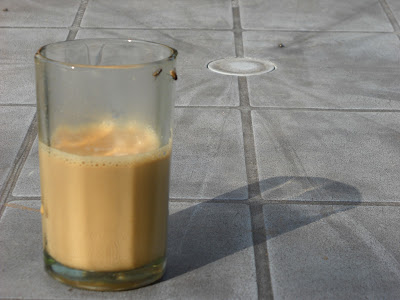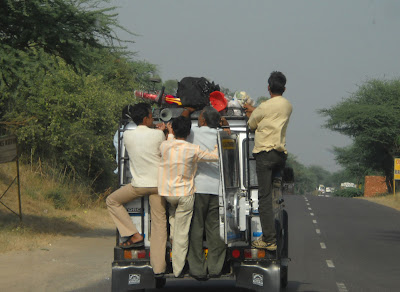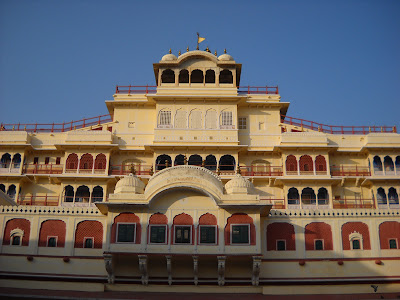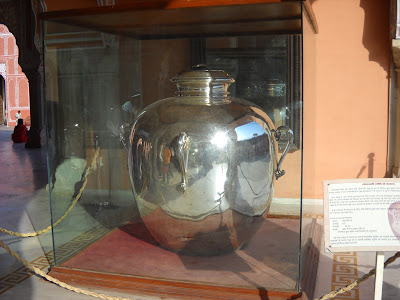“Tu toh Hrithik Roshan dikhe hai” (You look like Hrithik Roshan). In
Here I was at the
I’m a marwari and my hometown is 240 kilometers from Jaipur. Even though I live in Mumbai, my family and I visit our hometown twice every year to pray to our Kuldevi (Family Goddess). During these trips we also visit other places of worship like Salasar Balaji temple, Khatu Shyamji temple and the Ajmer Sharif dargah.
It’s 8 in the morning and I stretch myself as we wait for our taxi to pick us up from Jaipur airport. I see a man dressed in traditional Rajasthani attire with a placard. I crane my neck to see if our name was written on it, but alas, no such luck there. We’ve just arrived on a 6 am flight from Mumbai, which basically ensured that you don’t have a good night’s sleep. I was lucky in a way, as the 2 seats next to me on the flight were empty so I lay down and had an hour’s nap.
A white coloured Toyota Innova rolls to a stop before us (after some frantic waving by dad) and we load our luggage, take a seat and head off to Salasar. We make an early stop for some diesel. 9 km from the airport (area called Sahakari Bhavan) is a petrol pump of BPCL, where 95% of the attendants are ladies. Quite a rare sight in
On the way to Salasar, we stop for a quick breakfast 62 km from Jaipur, at a restaurant called Jhalak (Immediately reminded me of Himesh Reshammiya, his cap and his nasal twang). The pattern breakfast in the north of
A few kilometers ahead is the town of
Rajasthan is one of the drier states of
Our talk gets cut short as we reach a Toll Booth and we need to pay 25 INR. A couple of young boys run up to the car offering fresh mullis (radish), 2 for 10 INR. The toll tax that is being collected is being put to a good use as the roads are in good condition and speeds of 80 kmph are achievable even though it is a two way road.
One thing you should know about Raju, is that he seems to be a big fan of Formula 1 racing. He might not know the names of the drivers or their teams, but he’s very good at imitating their on-track antics as he pushes the
On the way back to Jaipur we cross Navalgarh (140 km from Jaipur). This is a small town which hosts a camel fair for 10 to 15 days near the end of October. From here the fair moves to its more famous avatar at Pushkar, where the fair is held during from 12th to 21st November.
“You went to Jaipur and didn’t see any of the palaces?” is what my friends would have told me had I returned to Mumbai without taking in some of the sights of Jaipur. So the next day we head out to see some of the city’s heritage before we head home.
The City Palace of Jaipur is where the current King, Maharaja Sawai Bhawani Singh, still resides with his family. A part of the palace is open for the public to see and enjoy. Our guide, Digvijay, accompanies us through the palace and entertains us with trivia about the palace and the erstwhile kings. Our first stop is the Mubarak Mahal. Built by Maharaja Sawai Madho Singh II in 19th century to entertain his guests, today it has on display an array of robes, bedspreads, turbans and other textiles used by the kings and queens. A wedding robe, made of muslin from Dhaka and having 320 pleats, Maharaja Man Singh II’s winter as well as summer polo attire, Maharaja Sawai Madho Singh II’s (who was 7 feet tall, had a chest measuring 4 feet and weighed 250 kgs) robe and pyjama and many other clothes are on display.
The Diwan – i – Khaas (Private meeting chamber of the King) has 2 large Silver Urns. These urns weigh 350 kgs each and can hold 900 galloons of water. Maharaja Sawai Madho Singh II would drink and use only water from the River Ganga to bathe. When he went to
A little ahead was the Diwan – i – Aam (Public meeting chamber of the King). The grandeur of this room is a sight to be seen. Intricate leaf and flower patterns made using real gold, adorn the ceilings. A crystal chandelier hangs in the centre of the hall. This chandelier was brought from
An interesting fact that I learned here is that the modern game of Polo actually originated from
Even before that, polo has been popular in
Jantar Mantar
Yantar means instrument and Mantar means formula or calculation. But over time, the Y of yantar got converted to J, which is why it is now known as Jantar Mantar. The Jantar Mantar is located opposite the
The gem in the Jantar Mantar’s crown is the 90 foot (27 m) tall Sun Dial (World’s largest) (also called Samrat Yantra) which tells you the time with an accuracy of 2 seconds. Jeetendra Singh, our guide, pointed out one important fact, “The Sun Dial can tell you the exact time at Jaipur. But since Indian standard time is derived from
Other instruments like the Jaiprakash Yantra tell you what Sun Sign the Sun currently is in, while the Narivalaya Yantra lets you know whether the Sun is in the Northern or Southern Hemisphere, all based on where the Sun’s rays fall. Further down, are 13 constructions of stones (some in the form of stairs, triangles, etc.) facing a particular direction and set at a specific angle. When you look along the plain of the top end of the construction you can see the North Star or the star of the particular Sun Sign that the construction corresponds to. These contraptions can be tested only at night, but unfortunately the Jantar Mantar shuts its doors at 5 pm.
“The level of perfection that Maharaja Sawai Jai Singh II wanted in these instruments can be seen in the fact that each instrument was first made in the form of a rough model, then a miniature scaled model and finally the actual instrument was constructed” points out Jeetendra. He adds that all three models of each instrument are still present here.
All the instruments are made specifically for Jaipur’s location (Latitude of 27 degrees North), so if they were to be exactly replicated at any other place they would not work correctly.
I’m so glad I took some time out and visited the
Before we said our good byes, I had one last thing to ask Jeetendra. “Why is Jaipur called the Pink city? Is it because of a certain stone used in the buildings?” Laughing, he replied, “Nahi Sir, in 1853 the Prince of Wales was visiting India and the king at that time (Maharaja Sawai Ram Singh II) got the city painted pink, since pink was considered the color of hospitality. From that time on, the main road inside the walled city, where the Hawa Mahal stands, is pink in colour and Jaipur is known as the pink city.”
This makes me curious, why is





















No comments:
Post a Comment